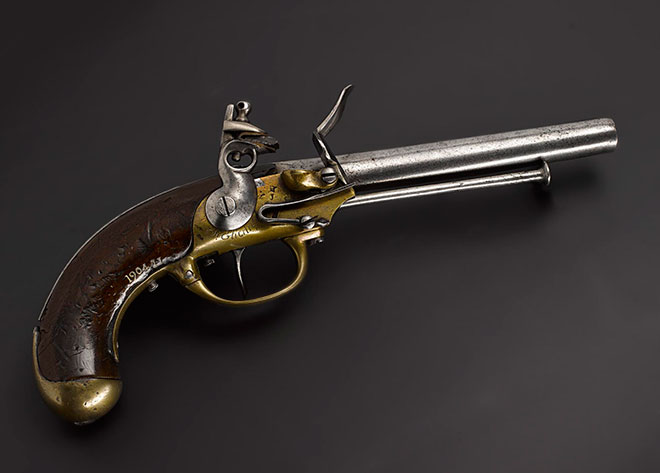The Battle of Waterloo was fought 200 years ago. The army of Napoleon Bonaparte’s resurgent French Empire was defeated by the combined armies of Britain, Prussia and their allies. Because the continent had been closed to British visitors during almost 20 years of war in Europe, the news of Napoleon’s final defeat at Waterloo prompted a rush of British tourists. This is one of the themes explored in our exhibition Waterloo: After the Battle, which explores the impact of the famous battle on Scotland.
After the victory, everyone who could afford to go set about making their way to Belgium. For most of them, the war had only been present in the slow and intangible world of newspapers. Travelling to Waterloo offered Scottish tourists a means of understanding the fallen Napoleon, the war and Scotland’s role in it. To remember this historical day and to celebrate the British victory, many tourists brought back souvenirs.
National Museums Scotland holds many Waterloo souvenirs. Their provenance is often unclear. While tourists recorded ‘picking objects up’, it is more likely that they bought souvenirs from the locals who had stripped the field of everything within hours after the battle. And when the genuine souvenirs ran out a few weeks after the battle, they might have sold objects that had nothing to do with Waterloo. And yet all of the souvenirs are valuable because people then and later linked them to the battle, its participants and all it represented.


Sir Walter Scott (though then just Mr Scott) was among the more famous visitors, travelling to the battlefield in August 1815. Like other tourists, he brought back a number of souvenirs. For example, he collected two knolls from ‘Wellington’s Tree’. The tree marked the spot from where the Duke of Wellington was thought to have directed the battle. It was covered with musket balls and damaged by cannon balls. Although the tree survived the battle, it did not survive the rush of tourists. They took ‘good sized branch[es]’ and cut the bullets out of it. Most of Scott’s souvenirs can be seen in his house at Abbotsford in the Scottish borders.
Most importantly, though, Scott published the poem ‘The Field of Waterloo’. By glorifying Scottish valour Scott helped to turn the battlefield into a sacred site. At the same time, mixing his personal observation and his tourist guide’s stories of the battle, Scott fed people’s demand for news of the battle.

Using Scott’s poem as reference, prints were created in 1816 which depicted specific battle scenes. Here, Scott laments the casualties, so the reader can comprehend the individual’s fate within the framework of British victory:
‘Alas! What links of love that morn
Has War’s rude hand asunder torn.
Here piled in common slaughter sleep
Those whom affection long shall weep.’
The lines are linked to the story of Wellington’s quartermaster-general Colonel Sir William De Lancey. When he was wounded by a cannon ball, De Lancey told Wellington to keep fighting rather than help him. He was brought to a cottage and was nursed by his bride, who was a well-known figure in Edinburgh society. He died a week later.
Waterloo: After the Battle runs at the National Museum of Scotland until 27 September 2015.
